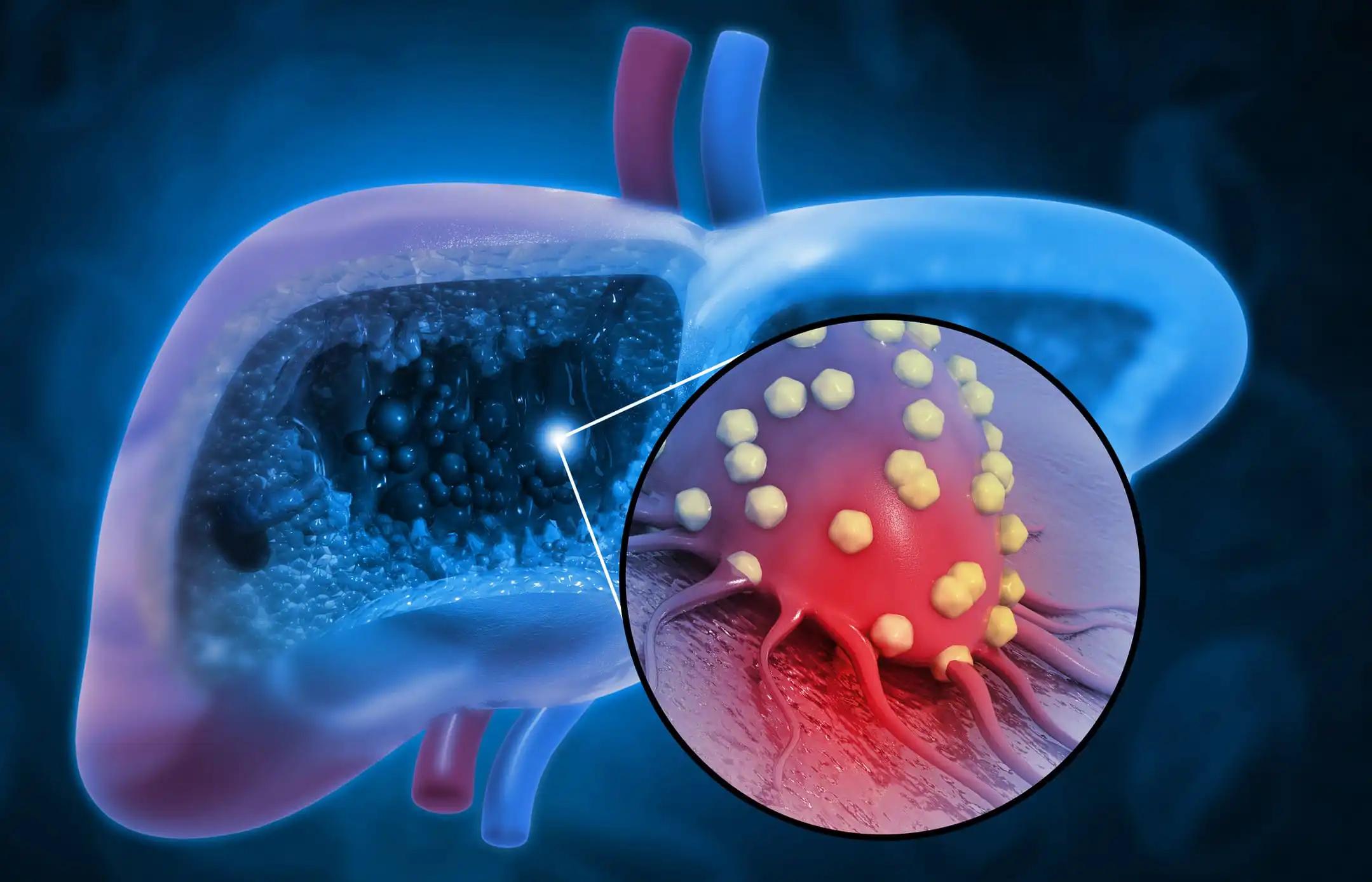KEY TAKEAWAYS
- Phase 3 HIMALAYA study (NCT03298451), the STRIDE regimen (Single T Regular Interval D) significantly improved overall survival vs. sorafenib (S) in uHCC.
- The frequency of ADAs to D and T was low (≤11%) in HIMALAYA, with similar rates in the STRIDE (T+D) and D arms.
- Prespecified secondary analyses assessed the presence of ADAs to D and T before the first study dose (baseline), once during treatment, and once after treatment discontinuation.
- The number of pts was small; in the STRIDE arm, ORR was 11.1% (1/9) in pts TE-ADA+ to D, 35.0% (7/20) in pts TE-ADA+ to T, and 23.9% (94/393) in the complete analysis set (FAS). In the D arm, ORR was 25.0% (2/8) in pts TE-ADA+ to D and 18.5% (72/389) in the FAS.
- In both arms, TRAE and Grade 3/4 TRAE rates were not increased in the ADA+ vs. ADA- groups and were generally consistent with the overall population.
ADAs may diminish HCC antitumor activity to immune checkpoint inhibitors. Treatment-emergent adverse drug reactions (TE-ADARs) have been reported at rates ranging from 1.5% for pembrolizumab and 8.6% for nivolumab to 54.1% for atezolizumab (Enrico et al. Clin Cancer Res 2020). The STRIDE regimen (Single T Regular Interval D) significantly increased overall survival compared to sorafenib (S) in a worldwide Phase 3 study (NCT03298451) of uHCC; D monotherapy was non-inferior to S. (Abou-Alfa et al. NEJM Evid 2022). This article evaluated the prevalence of T and D antidote resistance in HIMALAYA.
Anti-Drug Absorption (ADA) and Anti-Treosulfanilide (ATA) were measured before (baseline), once (during), and once (after) therapy with the help of prespecified secondary analyses. Anti-dsDNA (ADA) antibodies were measured in all patients (pts) and in those who tested positive for ADA at any time point (ADA+). Patients with a positive post-baseline sample only or an increase in ADA titer of >4-fold after treatment were considered TE-ADA+. Patients were considered ADA harmful (ADA-) if they had no positive samples at baseline or subsequent visits. Subgroups of ADA patients were analyzed for objective response rate (ORR; RECIST v1.1, inc. unverified), overall survival (OS), and treatment-related adverse events (TRAEs).
Similar numbers of patients in the STRIDE (T+D) and D arms tested positive for ADAs to D (8.2% (24/294) and 7.1% (20/282), respectively); 3.1% (9/294) and 2.8% (8/282), respectively; 1.7% (5/294) and 0.7% (2/282), respectively; and 0.7% (2/282) exhibited nAbs to D. Patients in the STRIDE arm showed an ADA positivity of 15.9% (29/182), a TE-ADA positivity of 11.0% (20/182), and a nAb positivity of 4.4% (8/182). The overall response rate (ORR) for patients in the STRIDE arm ranged from 11.1% (1/9) in patients with TE-ADA+ to D to 35.0% (7/20) in patients with TE-ADA+ to T to 23.9% (94/393) in the complete data set, despite the small sample size (FAS).
ORR for patients transitioning from TE-ADA+ to D was 25.0% (2/8), while 18.5% (72/389) in the FAS arm. The D and STRIDE arms’ OS for patients with TE-ADA+/nAb+ to D or T was in line with the FAS. The TRAE and Grade 3/4 TRAE rates in the ADA+ versus ADA- groups were not higher than in the general population (Table). Rates of TE-ADAs and nAbs to D and T were meager (≤11%) in HIMALAYA. Patients with ADAs showed no difference in clinical efficacy or safety when receiving STRIDE or D monotherapy. These data further prove that STRIDE or D ADAs are uncommon in uHCC.
Source: https://meetings.asco.org/abstracts-presentations/215640
Clinical trial: https://clinicaltrials.gov/ct2/show/NCT03298451
Crysler, O.V., Yarchoan, M., Furuse, J., Galle, P.R., Sukeepaisarnjaroen, W., Thinh, N.T., Masi, G., Lim, H.Y., Varela, M., Gupta, C., Makowsky, M., Negro, A. and Abou-Alfa, G.K. (2023). Presence and impact of antidrug antibodies (ADAs) to tremelimumab (T) or durvalumab (D) in the phase 3 HIMALAYA study of unresectable hepatocellular carcinoma (uHCC). Journal of Clinical Oncology, 41(4_suppl), pp.551–551. doi:https://doi.org/10.1200/jco.2023.41.4_suppl.551.



